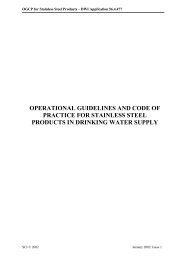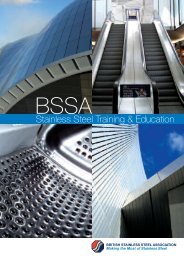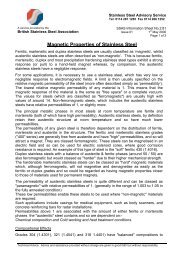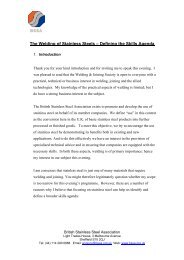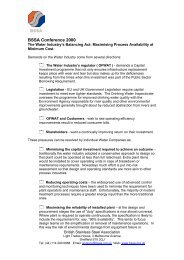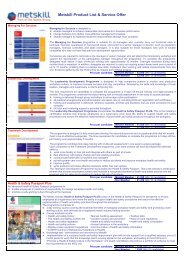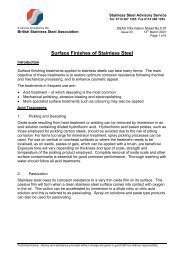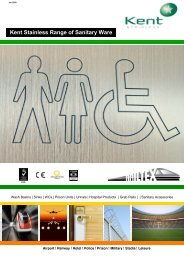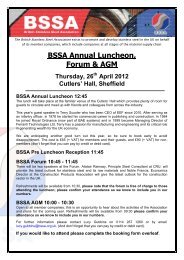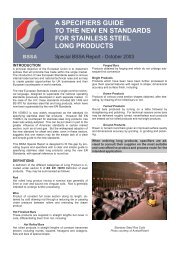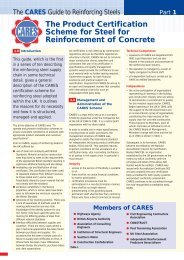FAQ - British Stainless Steel Association
FAQ - British Stainless Steel Association
FAQ - British Stainless Steel Association
You also want an ePaper? Increase the reach of your titles
YUMPU automatically turns print PDFs into web optimized ePapers that Google loves.
BSSA_Guide 12/2/09 14:26 Page 36<br />
CHAPTER 9<br />
Magnetic Properties of <strong>Stainless</strong> <strong>Steel</strong><br />
Chapter 9 - Magnetic Properties of <strong>Stainless</strong> <strong>Steel</strong><br />
Now that we have covered the basic structure and properties of stainless<br />
steels, it is worth spending a little time on this subject. This is particularly<br />
important as there is a lot of mis-information around.<br />
“A magnet will not stick to 304 stainless steel but it will to type 430 or to any<br />
other inferior material”.<br />
Although the statement is generally correct, the truth is rather more complex.<br />
Recap from Chapter 6:<br />
<strong>Steel</strong> Structure<br />
Ferritic (Body Centred Cubic)<br />
Martensitic (Body Centred<br />
Tetragonal)<br />
Austenitic (Face Centred Cubic)<br />
Duplex (Mixed Austenitic/Ferritic)<br />
Magnetic Properties<br />
Magnetic<br />
Magnetic<br />
Non-Magnetic<br />
Magnetic<br />
Austenitic stainless steels such as type 1.4301 (304), 1.4401 (316) are<br />
nominally non-magnetic because the austenite structure is non-magnetic.<br />
However, there are two reasons why an austenitic stainless steel can have<br />
some degree of magnetic response.<br />
Effect of Ferrite<br />
All austenitic stainless steels contain a small amount of ferrite. Usually, this is<br />
not enough to attract a normal magnet. However, if the balance of elements in<br />
the steel favours the ferritic end of the spectrum, it is possible for the amount<br />
of ferrite to be sufficient to cause a significant magnetic response. Also, some<br />
types of product are deliberately balanced to have a significant amount of<br />
ferrite. Castings are in this category and normally have about 10% ferrite.<br />
Welding can also induce a greater magnetic response in the melted zone where<br />
ferrite is produced in greater quantities than in the parent material.<br />
32<br />
Understanding <strong>Stainless</strong> <strong>Steel</strong>



